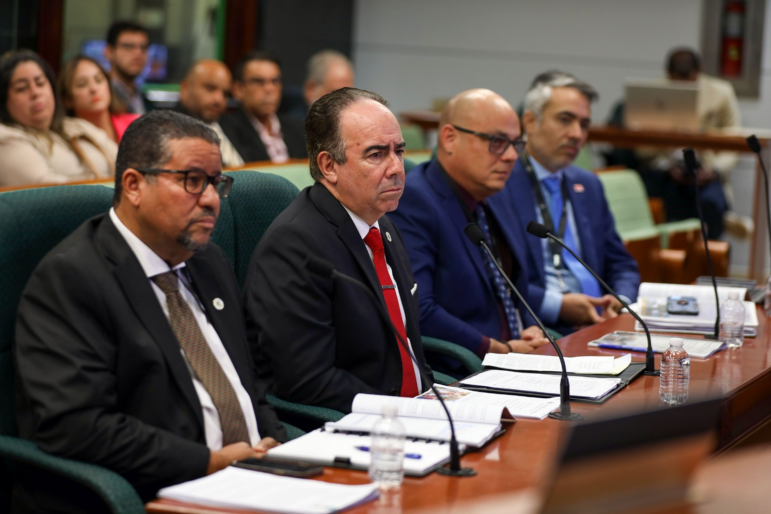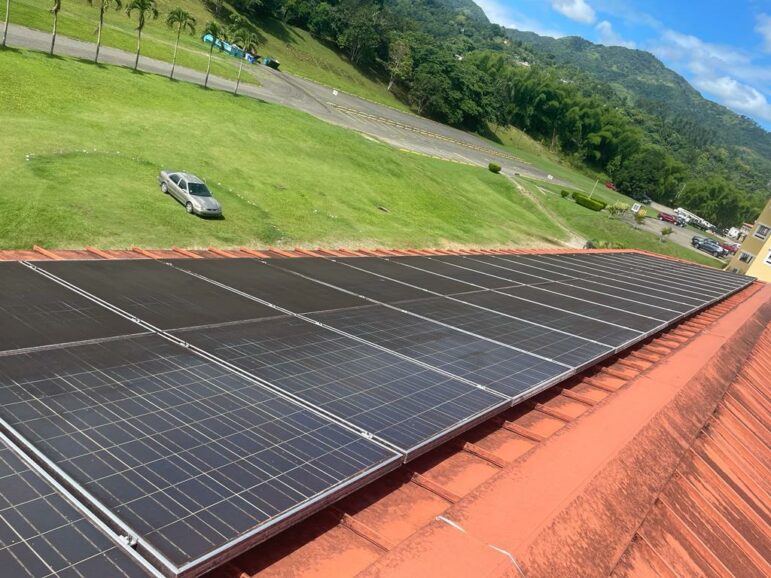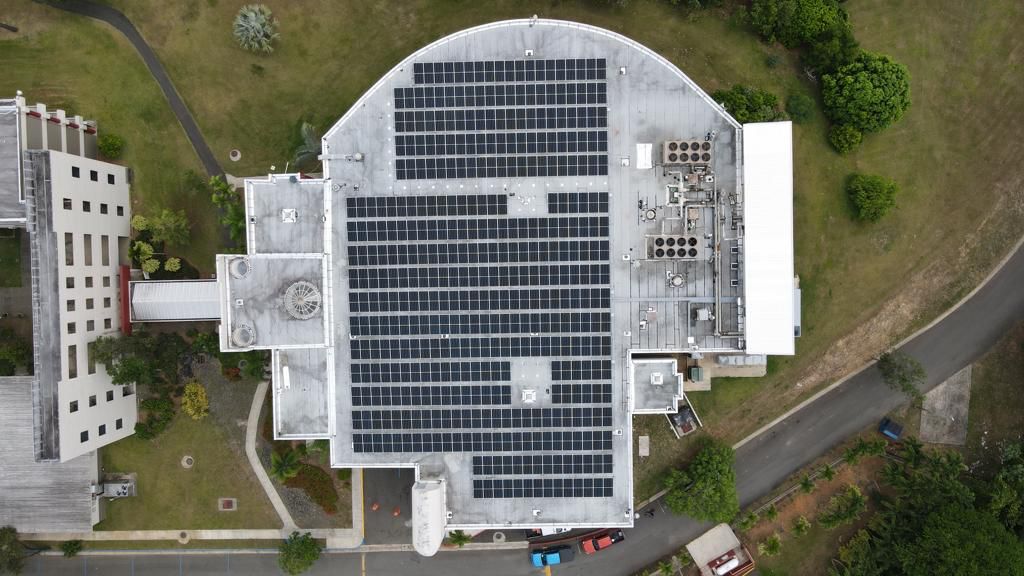The University of Puerto Rico (UPR) identified $34,501,712 to pay for electricity expenses at its 11 campuses, which represented 3% of the institution’s certified budget for fiscal year 2022-2023. However, as the fiscal year ends, the estimated total expense for this service increased to $44,171,028. The nearly $10 million difference for this expense is compounded by the fact that some facilities, such as the Río Piedras and Cayey campuses, spent more for this line item due to prolonged breakdowns or unexpected repairs of electrical substations.
Of the 11 campuses, Río Piedras, the main one, saw the largest increase in electricity spending, falling short by more than $4 million of the money budgeted for this service. Mayagüez follows with $1,349,801 in expenses over the $6,690,199 budgeted for electricity bills; and Humacao, where $1,400,000 was budgeted but spending increased by $1,344,633 for a total of $2.8 million.
The Bayamón, Carolina, Medical Sciences, Arecibo, Cayey, Aguadilla, and Ponce campuses had to identify between $170 and $700,000 more than what was budgeted to pay for electricity. The Utuado Campus had the lowest difference in its checkbook in this line, with an increase of $9,000 in its annual bill.
UPR President Luis A. Ferrao Delgado, acknowledged during a public hearing of the House Finance and Budget Committee that the “extraordinary increases, such as electricity, have caused the system units to operate without wiggle room” and anticipated that the institution would operate with a deficit of $27 million if the funding allocations are not increased for the next fiscal year. The campuses where the largest deficits are projected for this fiscal year are Río Piedras, Humacao, Carolina, Medical Sciences and Cayey.

Photo by Tammy Olivencia | House of Representatives
The UPR’s general budget — which has been slashed by 48% over the past six years — is $1,320,564,000 for the 2023-2024 fiscal year. The UPR has 42,759 students.
What Are Campuses Doing to Save Energy?
Since June 2021 — when private company LUMA began to manage energy distribution — through June 2022, the Puerto Rico Energy Bureau approved five consecutive increases in the electricity rate. This fee is reviewed quarterly to adjust for factors such as inflation or changes in fossil fuel prices. Among the alternatives that all the UPR system’s units have sought to save energy are changing lighting fixtures and air conditioning equipment for more efficient ones and installing solar panel systems in some buildings.
The Medical Sciences Campus (RCM, in Spanish) replaced the lighting with LED technology, as well as the air conditioning units and five coolers with high-efficiency ones. In addition, the facility has a bank of regulators in the electrical room of the Guillermo Arbona Irizarry Building that helps save energy. They installed movement sensors for the hallway lights and variable frequency drives to control the air conditioner fans in the same building. The library has solar panels.
Other energy-saving proposals in the pipeline include installing tables with solar panels, continuing the replacement of light fixtures, and instructing employees to turn off lights and equipment when they finish their shift. In addition, RCM management is considering conducting an energy use study.

As in the RCM, the Ponce Campus replaced air conditioning units and lighting with LED technology, and it is checked daily that the units are turned off. Plans to increase energy savings include steps by the Ponce campus administration to install an automated lighting and air conditioning control system for the academic building, as well as installing a renewable energy system with funds from the Development Block Grant Community Mitigation Fund (CDBG-MIT).
In 2012, the Utuado Campus received $100,000 to install a solar energy system in the library, and more recently, a grant from nonprofit organization Second Nature to transition the operation of the campus to solar energy. Like other units of the UPR System, they also installed LED lights and motion sensors in different areas.

Photo provided by the University of Puerto Rico, Utuado Campus
The Cayey Campus also received a $2.6 million grant from the U.S. Department of Education to install solar panels in its Emergency Operations Center, as well as power generators. In late February, the campus administration had to incur an unexpected expense of $38,305 for a breakdown in an electrical substation on campus, and this expense is not final since they still need to purchase a transformer that costs about $379,000, before installation. Although the Security Building has solar panels, the system does not work.
In April, the operation of the Río Piedras Campus was also interrupted by an electrical breakdown that implied expenses in cleaning and removing fungus in several buildings after the service was restored. On this matter, Delvin Caraballo, the representative of undergraduate students before the UPR’s Governing Board, said in a letter addressed to that body that restoring the electrical systems to the conditions in which they were prior to the hurricanes at the Río Piedras campus could cost $90 million. The budget memorandum recently submitted to the House of Representatives warns that only 15% of the institution’s General Fund is available to pay for infrastructure maintenance, which includes major repairs and reconstruction of critical infrastructure, such as power substations.

Photo by Norenid Feliciano | Centro de Periodismo Investigativo
The administration of that facility confirmed that replacing the main substation, central plant, and the substations of 78 buildings is underway, in addition to integrating co-generators that will serve as redundancy to the main substation but did not specify when the work will be completed. It also plans to install photovoltaic systems in 21 buildings. Now, all the areas of the campus are illuminated with LED technology and 37 tables with solar panels have been installed.
Meanwhile, the Bayamón Campus plans to create an electrical microgrid with the surrounding schools, as well as replace the high-intensity lighting with LED. The UPR’s Central Administration did not specify when or to which entity it would present the proposal for the Bayamon Campus microgrid, or if it will be developed with neighboring public schools.
In the Carolina Campus, there is a building that operates with a photovoltaic system of 405 solar panels and plans call for installing panels in another four buildings in the next six months. As in Medical Sciences, they changed all their lighting to LED and the air conditioner cooling systems.
However, Campus Rector José I. Meza Pereira, warned in October 2020 during the presentation of the energy plan for the Carolina campus that “90% of the budget allocated for service and maintenance of the physical plant goes to pay the [the electricity bill].”
Solar panels in the Carolina Campus.
Photo provided by the University of Puerto Rico, Carolina Campus
At the Humacao Campus, LED lighting and energy-efficient equipment were installed in the bathrooms. Ingrid Vázquez, the director of the Campus’ Press and Communications Office, also said that a proposal was submitted to the Housing Department in April for funds from the Infrastructure Mitigation Program (INFRA-MIT) to change the air conditioners for energy-saving units.
In Arecibo, the building that houses the Center for Preschool Development as well as the Physics and Chemistry laboratory rooms have solar panel systems. Similarly, solar spotlights were installed in different areas, traditional lighting was replaced by LED lighting and solar panels are being installed in the Administration building.
In Mayagüez, the Chemical Engineering Building has a laboratory that has a solar panel and battery system. Like the Humacao Campus, the Mayagüez campus, administration submitted a cogeneration proposal for CDBG-MIT funds in late April, which would slash energy costs by 50%.




